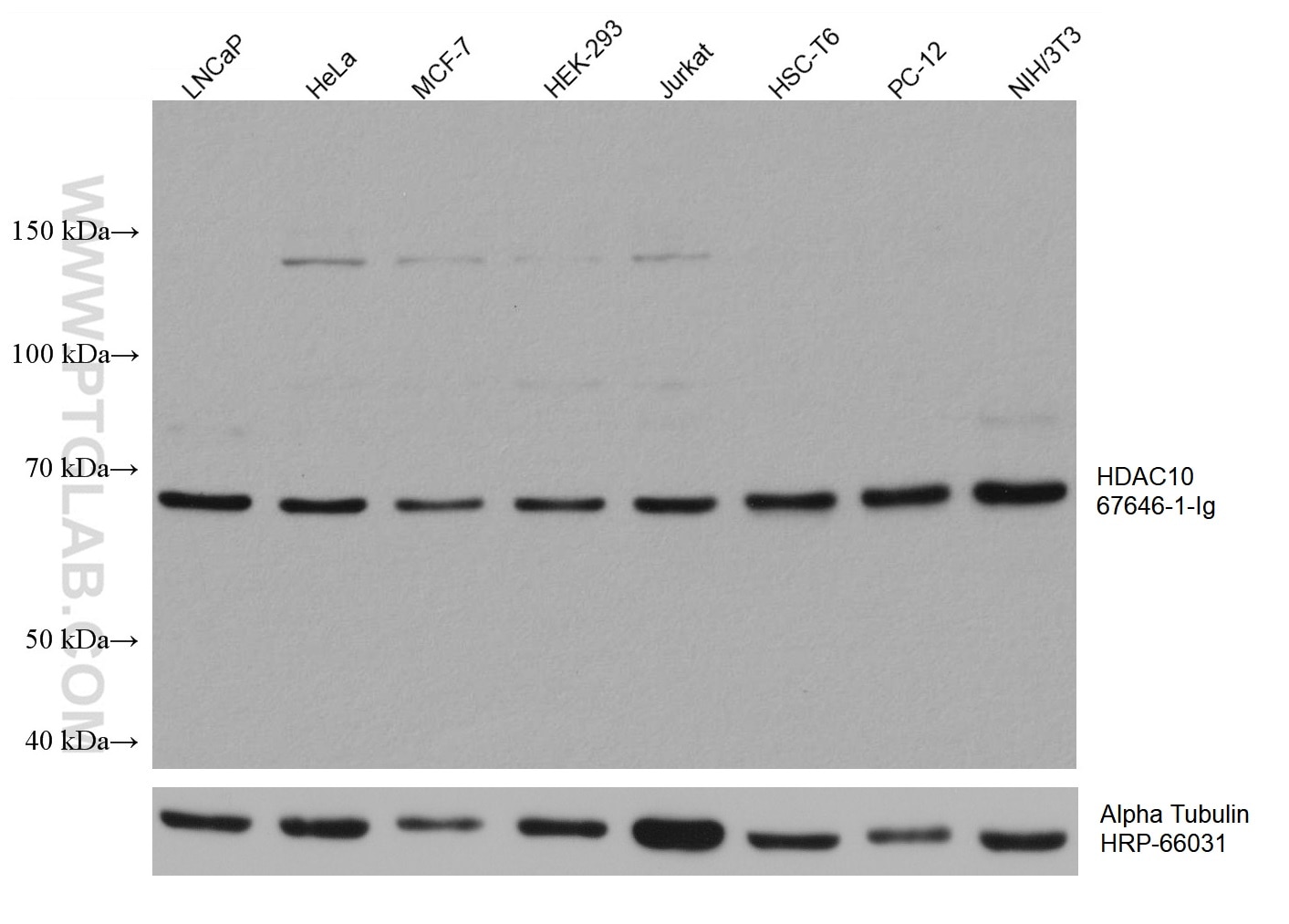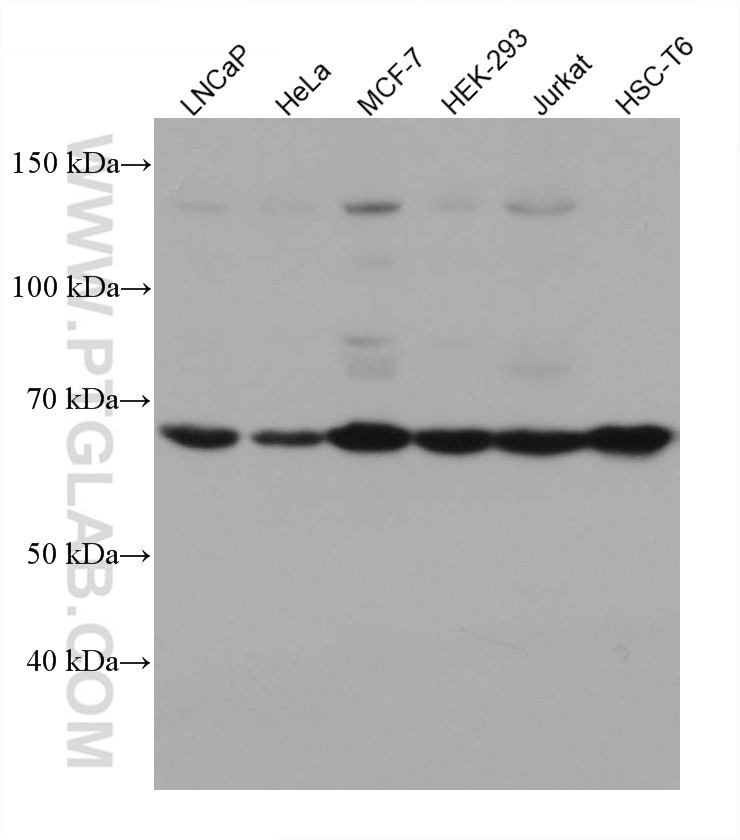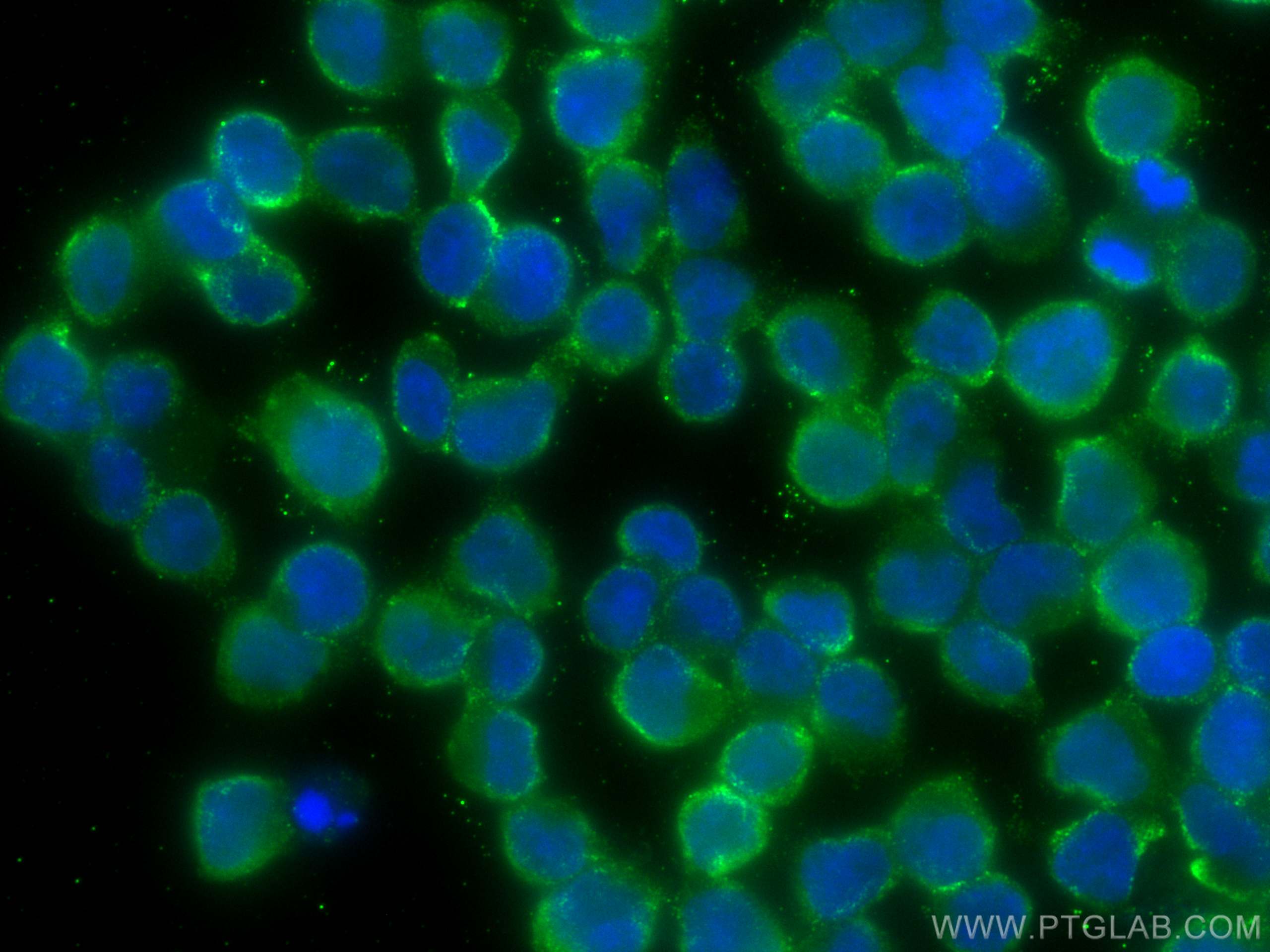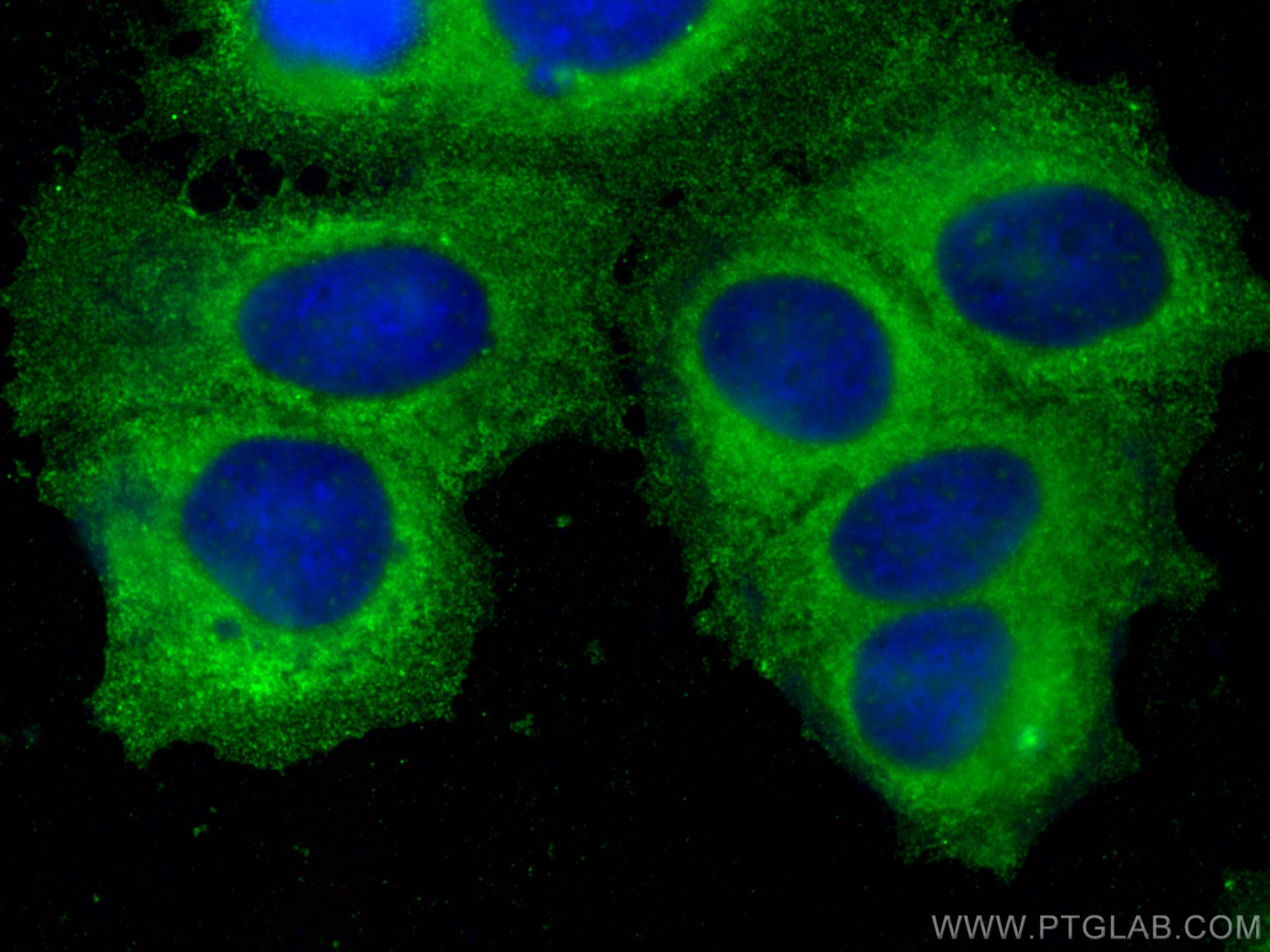Tested Applications
| Positive WB detected in | LNCaP cells, HeLa cells, MCF-7 cells, HEK-293 cells, Jurkat cells, HSC-T6 cells, PC-12 cells, NIH/3T3 cells |
| Positive IF/ICC detected in | MCF-7 cells, Jurkat cells |
Recommended dilution
| Application | Dilution |
|---|---|
| Western Blot (WB) | WB : 1:5000-1:50000 |
| Immunofluorescence (IF)/ICC | IF/ICC : 1:400-1:1600 |
| It is recommended that this reagent should be titrated in each testing system to obtain optimal results. | |
| Sample-dependent, Check data in validation data gallery. | |
Published Applications
| WB | See 2 publications below |
Product Information
67646-1-Ig targets HDAC10 in WB, IF/ICC, ELISA applications and shows reactivity with human, mouse, rat samples.
| Tested Reactivity | human, mouse, rat |
| Cited Reactivity | human, mouse |
| Host / Isotype | Mouse / IgG1 |
| Class | Monoclonal |
| Type | Antibody |
| Immunogen |
CatNo: Ag18470 Product name: Recombinant human HDAC10 protein Source: e coli.-derived, PET28a Tag: 6*His Domain: 320-669 aa of BC125083 Sequence: TLLGDPAPPLSGPMAPCQSALESIQSARAAQAPHWKSLQQQDVTAVPMSPSSHSPEGRPPPLLPGGPVCKAAASAPSSLLDQPCLCPAPSVRTAVALTTPDITLVLPPDVIQQEASALREETEAWARPHESLAREEALTALGKLLYLLDGMLDGQVNSGIAATPASAAAATLDVAVRRGLSHGAQRLLCVALGQLDRPPDLAHDGRSLWLNIRGKEAAALSMFHVSTPLPVMTGGFLSCILGLVLPLAYGFQPDLVLVALGPGHGLQGPHAALLAAMLRGLAGGRVLALLEENSTPQLAGILARVLNGEAPPSLGPSSVASPEDVQALMYLRGQLEPQWKMLQCHPHLVA Predict reactive species |
| Full Name | histone deacetylase 10 |
| Calculated Molecular Weight | 669 aa, 71 kDa |
| Observed Molecular Weight | 70-75 kDa |
| GenBank Accession Number | BC125083 |
| Gene Symbol | HDAC10 |
| Gene ID (NCBI) | 83933 |
| RRID | AB_2882846 |
| Conjugate | Unconjugated |
| Form | Liquid |
| Purification Method | Protein G purification |
| UNIPROT ID | Q969S8 |
| Storage Buffer | PBS with 0.02% sodium azide and 50% glycerol, pH 7.3. |
| Storage Conditions | Store at -20°C. Stable for one year after shipment. Aliquoting is unnecessary for -20oC storage. 20ul sizes contain 0.1% BSA. |
Background Information
HDAC10, also named as Histone deacetylase 10, is a 669 amino acid protein, which is widely expressed with high levels in liver and kidney. HDAC10, which belongs to the class IIb subfamily, has an active deacetylase domain (DAC) and a catalytically inactive leucine-rich domain (LRD). HDAC10 is determined that it plays a role in homologous recombination, promotes autophagy and survival in neuroblastoma cells, suppresses cervical cancer metastasis and facilitates the cell cycle.
Protocols
| Product Specific Protocols | |
|---|---|
| IF protocol for HDAC10 antibody 67646-1-Ig | Download protocol |
| WB protocol for HDAC10 antibody 67646-1-Ig | Download protocol |
| Standard Protocols | |
|---|---|
| Click here to view our Standard Protocols |
Publications
| Species | Application | Title |
|---|---|---|
Nat Metab Oligodendrocyte precursor cell-specific blocking of low-glucose-induced activation of AMPK ensures myelination and remyelination | ||
Transl Cancer Res Molecular, biological characterization and drug sensitivity of chidamide-resistant MCF7 cells |










